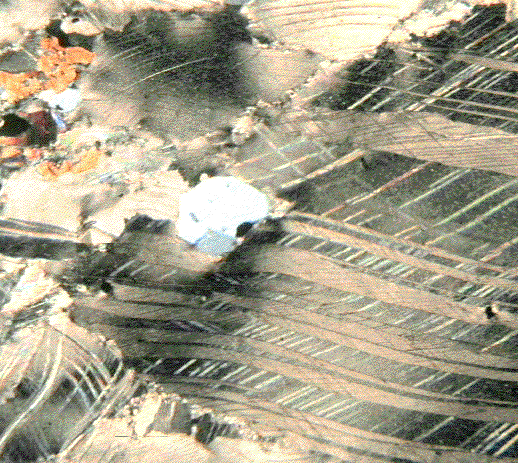 CET/UWA Microstructure Course
CET/UWA Microstructure Course CET/UWA Microstructure Course
CET/UWA Microstructure Course3) Evidence of crystalline plasticity in naturally deformed
rocks.
a) Quartzite Weak to moderate deformation of a quartzite with minor micas at low metamorphic grade. Original clastic quartz grains show numerous features of intra-crystalline plasticity, including deformation bands, and undulose extinction.


Now look at grain A in the top right hand corner, and make a sketch of its basal plane (assuming the dark bands are sub-perpendicular to the basal plane, as they usually are in low temperature deformed quartz).
b) Marble A typical low grade deformed
marble, showing extensive twinning.

Why are the twin planes in the calcite curved?
c) Mt Kosciusko Granite

Place a cross on the generic deformation mechanism
map below for both the quartz and the feldspar. On the same diagram show
the calcite from the previous picture as an arrow showing its history.
